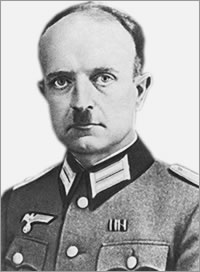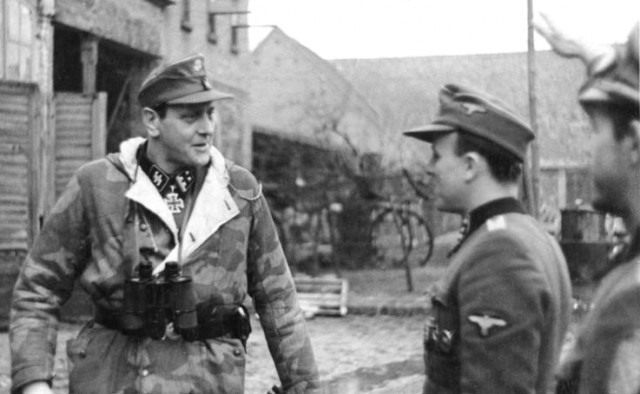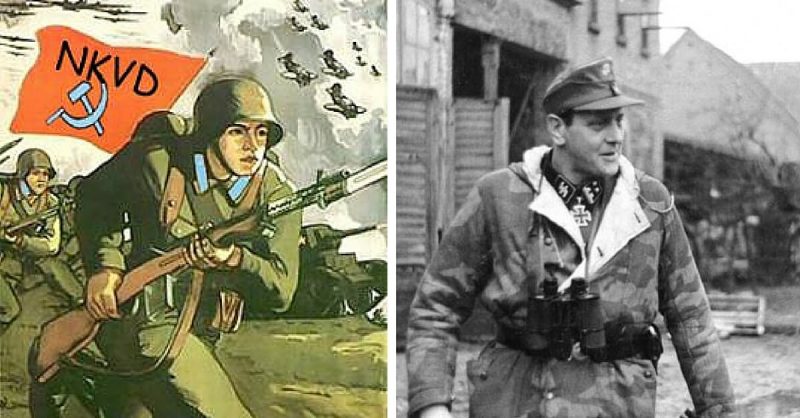During the height of WWII, a major funkspeil was about to begin. This counter-espionage plan, introduced by Joseph Stalin, was an operation set forth by the Soviet NKVD to entice Nazi secret service agents into their grasp over radio messaging from August 1944-May 1945. Slowly but surely, the Soviets planned to eradicate the Nazi empire (reich) from within, a maneuver now known as Operation Scherhorn.
Operation Scherhorn (also known under Soviet codename “Operation Berezino,”, came into fruition through the efforts of two men: Mikhail Maklyarsky and Victor Ilyin, NKVD officers who based this side project off of tactics used during Operation Monastyr. However, the operation was finally carried out by Pavel Sudoplatov and other NKVD officers.
And what was the main goal of Operation Scherhorn? To eradicate Nazi intelligence forces. The NKVD constructed an illusion, a fake team of armed German troops said to be operating in Soviet territory. Once the Nazis heard word of this, they would continuously send in field operatives to give aid to these soldiers – only to have them be taken hostage and later executed, one by one.
How it All Began
Beginning in 1941, an NKVD secret agent named Alexander Demyanov used a meeting with a German citizen in Moscow to break open a German undercover network called Abwehr. Following this, he had come up with a plan to acquaint himself with the Germans as a “defector” and gain their trust. After three months, Demyanov returned to the Soviets as a now-active double agent, supplying them with secret German intel from sources who trusted him.
After months of trading fake military strategies with the Germans, he was also feeding them small amounts of real Soviet intel. Not only did he want to appear genuine, but he wanted this to serve as a distraction to conduct their side operations. Overall, Demyanov personally sent dozens of German operatives to their deaths through his deceptive tactics, and the skilled actions of Demyanov and his team came under the watchful eye of one prominent leader: Joseph Stalin.
Intrigued by the results of their operation, Stalin wanted to continue this deceptive maneuver by widening its scope and creating a full-fledged campaign reliant on disinformation. Appointing a task force led by Soviet Lieutenant General Pavol Sudoplatov to launch his new vision, Stalin made it clear that his new goal was to get to the heart of Nazi intelligence by destroying the German special forces. Sudoplatov was instructed to build a ‘German camp’ just behind the Soviet stronghold to entice Nazi officers to send in agents on rescue missions. They then forced the newly-captured Germans to join the Soviet mission of destruction, using them to keep trusted connections intact. Finally, Operation Berezino was born.
Turning Plans Into Action
With the help of pro-Soviet Germans and antifascists, Berezino had quite the war effort pulled together from the beginning. And as the NKVD team scoured their prisoners of war, they finally chose the man to help bring their plans into effect: Lieutenant Colonel Heinrich Scherhorn, taken in June 1944. He was picked to serve as their ‘commander’ in the fake camp, keeping up appearances with German contacts back home. Left with little choice he agreed to play the Soviet’s game of deception.

Berezino first became active in August 1944, with ‘Max’ (Demyanov’s German codename) sending word about Scherhorn’s armed collective of up to 2,500 men being surrounded by Soviets along the Berezina River. Despite German Colonel Hans-Heinrich Worgitzsky initially being skeptical and anticipating a funkspiel from the Soviets, Officer Gehlen – a contact who trusted Max – argued for the rescue effort, and the plan set into motion.
It was confirmed that a small group of 4-5 German commandos were on their way, sent by Head SS Officer Otto Skorzeny. A Heinkel He 111 bomber plane dropped in supplies and paratroopers in assistance. The Soviets were ready for their arrival, disguised in Nazi uniforms to welcome their ‘allies.’ A collection of radio operators and SS agents made it to the camp, and once entering Scherhorn’s tent, were all subsequently arrested by the NKVD agents.
Also coerced into playing along, these commandos reported back that their mission was successful and more troops should be sent in. In rapid succession, Skorzeny sent in three more teams were to help – and all three groups became prisoners of war, with the Germans being none the wiser as their comrades continued to send wireless feedback announcing their safe arrivals.

Interaction in Spygames Continues, But German Response Begins to Slow
Continuing their deception, the NKVD had Scherhorn make contact with the Germans to announce that rapid success and return to Germany was impossible, as their numbers of wounded men had escalated. In response, Nazi command was going to send in planes to airlift the hurt and bring them to the rear of the German front. However, such a maneuver would quickly call out the Soviet betrayal.
To maintain their cover, NKVD staged a mini ‘fight’ during the night, supposedly between Scherhorn’s men and the Soviet soldiers, when the planes were set to land and make the rescue. In the chaos of the brawl, the makeshift runway had its lights extinguished, and the planes were unable to land and carry out the mission. The NKVD had again managed to keep up their game.
For months, both Gehlen and Skorzeny played into the Soviet’s hands, believing their 2000 men stronghold was stranded in enemy territory. Skorzeny ordered Scherhorn to split the large collective, sending one side along the Lativian-Lithuanian border and the other south, where both would then continue North to safety. However, this plan also fell through as Sudoplatov took control of Polish agents helping the German movement and disintegrated their faction in Poland as well.
The only support the Germans could continue to give was drop-ins of food and supplies. Throughout the entirety of the operation, sources say the Nazi regime had sent 39 flights with 22 agents and 13 wireless sets. With the number of German captives growing, the NKVD were even beginning to lose control, as their game had escalated into something far larger than they had anticipated. Despite this, radio contact remained between the Germans and the Soviets for months.
Finally, however, the aid of the Germans began to diminish. Around January 1945, the German forces had distanced themselves too far from the ‘Scherhorn’ collective, and the Luftwaffe were quickly running out of materials. Scherhorn, still under the NKVD and Sudoplatov’s control, continued to send requests for help over radio messaging, but little to no response was given. Gehlen, who had almost developed an obsession with making the Scherhorn raid a success, attempted to take control of the mission himself. However, Skorzeny vehemently denied his plan to take it on single-handedly, so Gehlen eventually backed off of the project.
As WWII was beginning to cease, so too did the funkspiel come to an end. Scherhorn was named a national hero in March 1945 for his supposed efforts in Soviet captivity, with the Nazi regime even awarding him the Knight’s Cross. And until the early days of May 1945, the Germans kept up radio contact with ‘Scherhorn,’ keeping hope alive for a German armed group of 2,000+ men – that never even existed.
Images: Bundesarchiv
